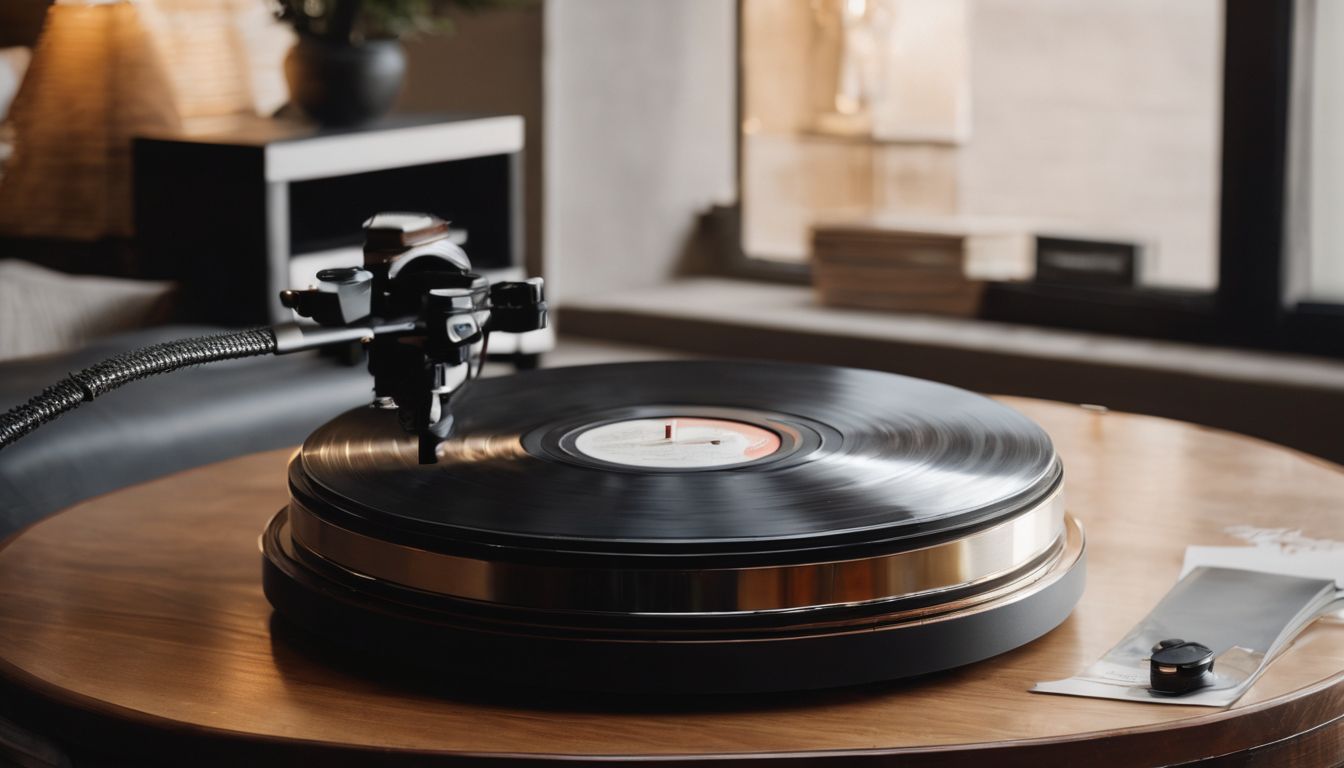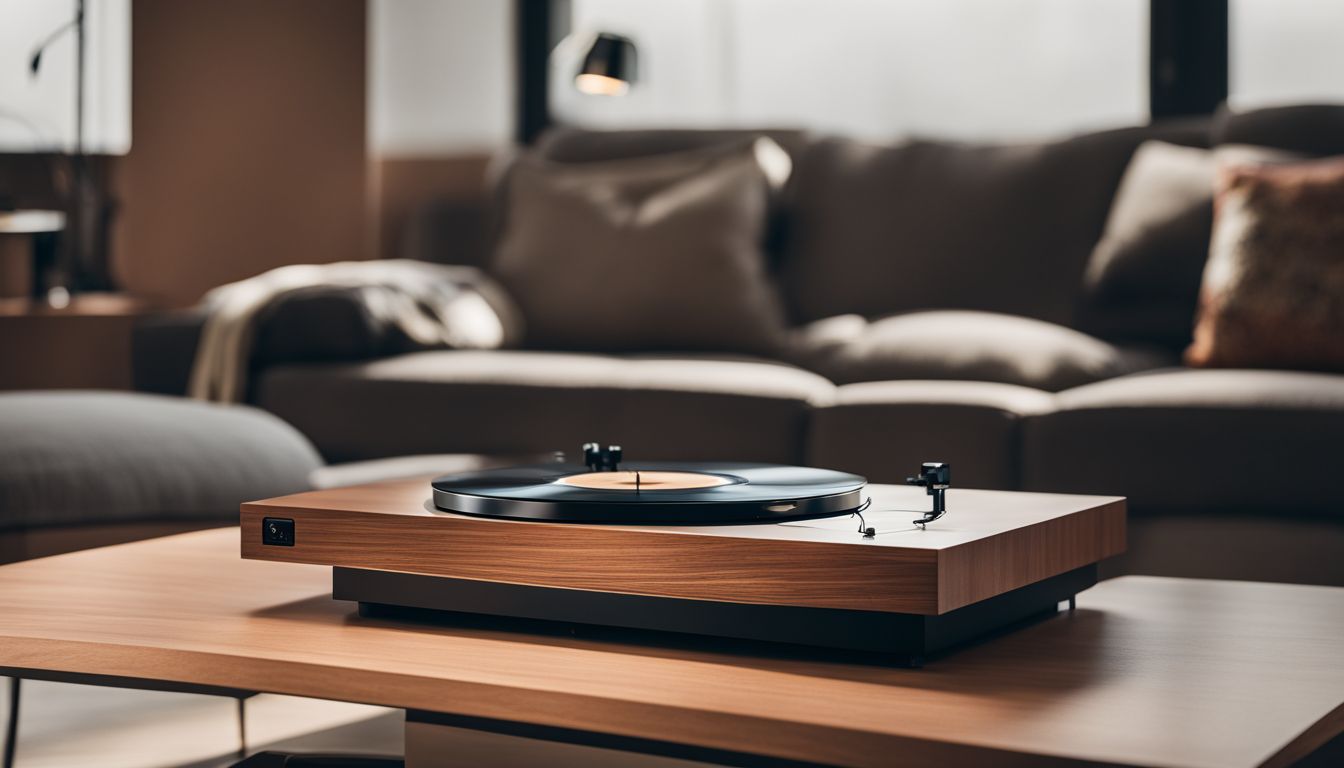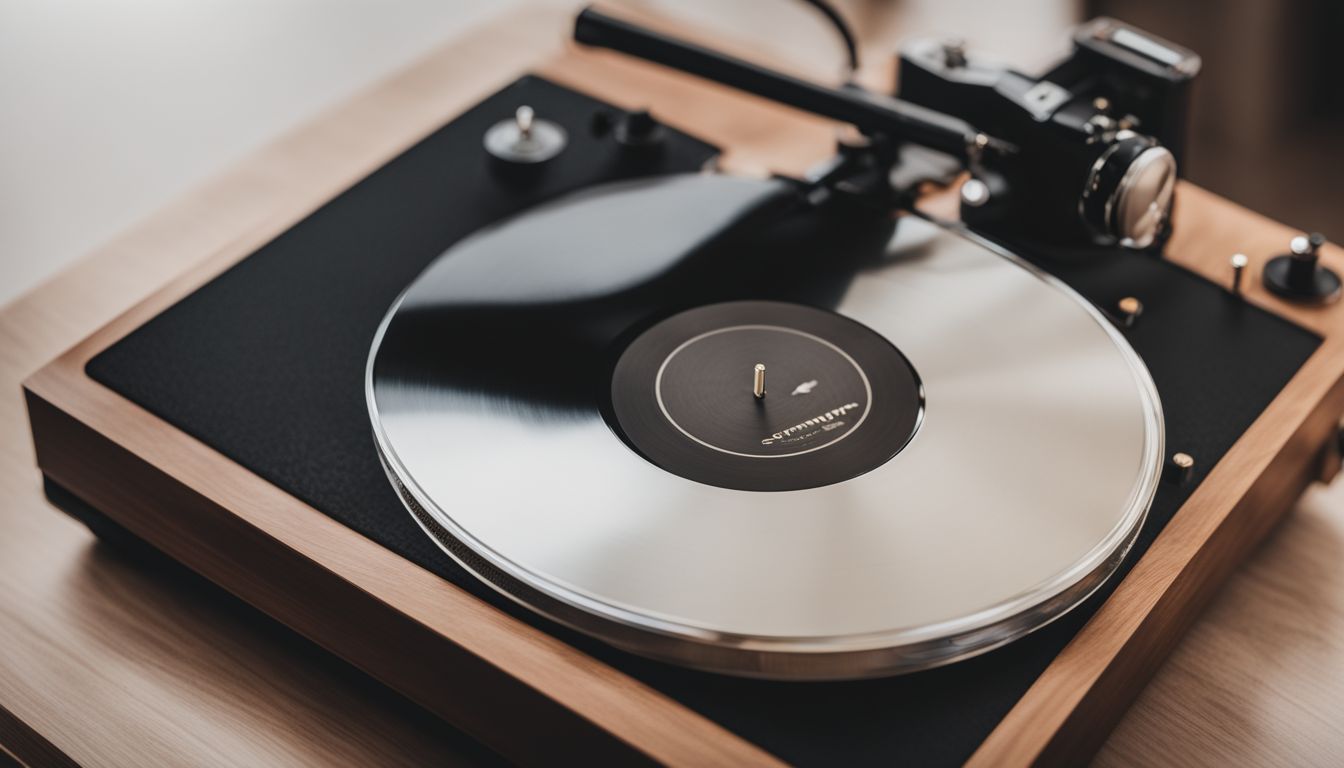Have you ever wondered why some records sound better than others on your turntable? A hidden hero of every record player is the plinth, a base that may seem simple but holds the key to top-notch performance.
This article will reveal the secrets of the turntable plinth and how it elevates your music experience by ensuring stability and sound quality. Discover why this foundation is more than just a piece—keep reading!
Key Takeaways
- The plinth is the base of a turntable, acting like a foundation to provide stability and reduce vibrations that can affect sound quality.
- Different materials used for plinths, such as wood, metal, or acrylic, have unique properties affecting the player’s aesthetic and audio performance.
- Plinths help isolate the record player from external disturbances like footsteps or speaker vibrations, ensuring that music plays with clarity and precision.
- Advanced designs like specialized isolation plinths go further to minimize external interference for an exceptionally clean sound output.
- Turntables have additional features such as cueing mechanisms and adjustable counterweights, which complement the role of the plinth in preserving vinyl records and enhancing playback.
Understanding the Term: What is a Plinth in a Turntable?
Moving from the broad concept of turntables to the specifics, let’s delve into the plinth. This critical component acts as the base that supports everything on a record player, akin to how a foundation supports a house.
It provides much-needed stability and a barrier against external vibrations, which could otherwise affect playback quality.
Manufacturers craft plinths using materials like wood, metal, or acrylic, each adding its own character to both design and performance. A well-constructed plinth not only enhances the visual appeal but also significantly improves resonance control, ensuring that DJs can mix or scratch without interference and music aficionados can enjoy pure, unaltered sound.
Whether it’s part of belt-driven turntables or direct-drive models, this unsung hero plays an indispensable role in any high-quality audio experience.
Importance and Role of the Plinth in Record Players
At the heart of every record player’s performance lies the plinth, a foundational element whose design and material composition play pivotal roles in ensuring optimal playback by minimizing unwanted vibrations.
The plinth of a turntable largely anchors its integrity, serving as both the physical support structure and an acoustic ally, critical for achieving the purest sound from your vinyl collection.
Provides stability and isolation.
The plinth acts as the foundation for a turntable, grounding it firmly to prevent any movement that could disrupt the delicate process of record play. In both vintage turntables and modern direct drive models, it carries out an essential role: keeping electronic parts steady while they work their magic.
This stability is vital; even minor shifts or wobbles can cause skips or distortions in sound, which ruin listening experiences.
Vibration isolation is another key feature of the plinth, ensuring that external vibrations from speakers, footfalls, or other environmental factors don’t interfere with the stylus tracking the grooves in your records.
The plinth absorbs these potential disturbances to ensure clarity and precision when playing back your favorite tunes. It’s all about finding a perfect balance where nothing but pure music reaches your ears—no additional noise, no unwanted echoes—just you and your tracks in perfect harmony.
Affects Sound Quality
Your turntable’s plinth isn’t just a base; it’s the unsung hero that shapes your music experience. Imagine vibrations from speakers or footsteps causing your records to skip or produce a fuzzy sound—that’s where the plinth steps in.
It serves as a shock absorber, resisting rattles and hums, ensuring each note reaches your ears with pristine clarity. Plinths made of dense materials like logs or lumber effectively block out those pesky tremors, ensuring that even the most subtle beats in scratching and direct drive turntables are heard exactly as intended.
Crafting this balance between isolating electronics from shaking and coupling them to prevent distortion is more art than science. A well-designed plinth can be the difference between flat, lifeless music and rich, full-bodied audio that feels alive.
So while you might pick up on every nuance of your favorite song, don’t forget that it’s partly thanks to a solid foundation beneath your turntable that keeps vibrations at bay and fidelity high.
There are various designs and materials available for plinths.
Turntable plinths vary greatly in design and material, each affecting the player’s performance and aesthetic. These differences can influence not only how the turntable looks but also how well it reproduces sound.
- Many people seek wooden plinths for their natural beauty and effective dampening characteristics. They absorb unwanted vibrations that can muddy the sound, thus ensuring a warmer, more authentic listening experience.
- Metal plinths bring a modern edge to turntables with their sleek look and robust build. These units offer increased durability and are less prone to warping or degradation over time, which makes them a strong choice for maintaining consistent sound quality.
- Acrylic plinths stand out for their eye-catching transparency and minimalist vibe. Besides their visual appeal, they effectively reduce resonance, making them good at preserving the clarity of the audio output.
- Specialized isolation plinths take vibration control to another level by decoupling equipment from its surroundings. Crafted from advanced materials like high-grade acrylic paired with aluminum legs, these plinths minimize external interference to deliver an impeccably clean sound.
Additional turntable features and functions, such as cueing
Beyond the plinth, turntables offer a variety of features and functions essential to an optimal playback experience. Cueing is one such feature that enhances the user’s interaction with the record player.
- Cueing mechanisms allow you to safely lower and raise the needle onto the record, preventing scratching and damage.
- Adjustable counterweights balance the tonearm, ensuring it applies just enough pressure to track records accurately without causing excess wear.
- Anti-skating settings compensate for forces that push the stylus toward the center of the record, which helps maintain fidelity throughout playback.
- Speed control options enable listeners to switch between 33 1/3 RPM for albums and 45 RPM for singles, providing flexibility in playing different types of vinyl records.
- Some models feature automatic start and stop functions, allowing the turntable to play or cease spinning at the end of a record, which adds convenience for users.
Conclusion
The plinth stands at the heart of every turntable, a silent guardian of sound fidelity. It grounds the device, marrying form and function in one solid foundation. With its ability to dampen unwanted vibrations, it upholds the clarity and quality of music we cherish.
A well-crafted plinth is not just a platform; it’s an indispensable ally in our quest for perfect acoustics. Remember, it’s not just what sits on the plinth that counts—it’s the craftsmanship beneath your records that truly makes them sing.
FAQs
What exactly is a turntable plinth?
A turntable plinth is the base or foundation of a record player that supports all other components, ensuring they stay stable and perform their roles effectively.
Why is the plinth important in a record player?
The importance of the plinth in a record player lies in its ability to absorb vibrations, which helps maintain sound quality by preventing unwanted noise interference during playback.
Can different materials used for plinths affect how a record sounds?
Yes, different materials used for making plinths can influence the sound quality of a record; some absorb more vibration and reduce resonance better than others, affecting audio performance.
Should I consider upgrading my turntable’s plinth?
Considering an upgrade to your turntable’s plinth could improve your listening experience if you’re seeking enhanced sound stability and overall better performance from your record player.


